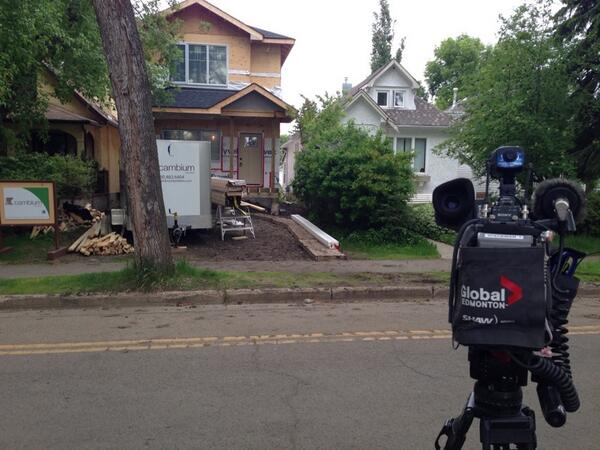EDMONTON – One week after releasing its infill plan proposal, the City of Edmonton is asking residents to provide their feedback.

Edmontonians are invited to review the Infill Action Plan online or at two public events:
– On Wednesday, June 11 from 4 p.m. to 7 p.m. in City Hall’s City Room;
– On Saturday, June 21 from 9 a.m. to noon at the Central Lions Recreation Centre
“People are resistant to change,” said Leith Deacon, an assistant professor in the University of Alberta’s planning program.
“It would be strange if people rolled over and just took something without giving feedback.
“I think it’s good that Edmontonians and other citizens from other communities are involved in this discussion. It shouldn’t be something that’s implemented across the board without adequate back-and-forth.”
Deacon said the city’s draft infill plan is a good first step.
The document contains 24 proposals, many of them entailing specific actions to be taken by city administration.
“The vast majority are dealing with ideas surrounding access and transparency and ensuring that citizens feel that they have adequate opportunity to participate in this discussion.”
READ MORE: City releases infill plan proposal, asks public for feedback
There are proposed changes to both the single family (RF1) and small-scale infill (RF3) zones. (Read the full action plan below).
The new RF1 zone would allow for easier subdivision of lots into two, encouraging the creation of newer, smaller residences. The easing of restrictions on the RF3 zone is meant to support the construction of more row housing. In addition, new garage and garden suites are identified as a top priority, and the city plans to again relax regulations to encourage construction of these housing types.
The plan outlines a series of proposals to encourage infill development over the next two years. In 2013, only 14 per cent of all new residences went up in established neighbourhoods.
During the three-week public review process – which runs until June 23 – Edmontonians are invited to comment on the Action Plan.
“Stagnant is not the answer to the vitality of a community or a city,” said Deacon.
“Especially a city like Edmonton that is growing and that does have a lot of space in a lot of neighbourhoods for infill.”
Still, Deacon believes the city has to apply some zoning regulations to ensure infill development matches the older neighbourhoods in some way, shape or feel.
The president of the Infill Development in Edmonton Association (IDEA) says that is all part of good design.
“You do need to design infill well and you do need to take into context the neighbourhood and the street face,” Tegan Martin-Drysdale explained. “To do anything else is just not good design.”
She adds that city restrictions need to be balanced to allow for innovation, creativity, and affordability – by allowing for secondary suites or multi-family housing, for instance.
Martin-Drysdale would also like to see the city approve infill housing in more Edmonton communities.
“What we’ve got is a scarcity in supply, which drives prices up.”
READ MORE: Edmonton moves forward on controversial mature neighbourhoods bylaw
Developer Doug Kelly agrees.
“In my opinion, council has to rezone or approve the subdivision of 50-foot lots in more neighbourhoods to increase the supply to keep the prices relatively stable.”
He’s confident there’s a big market in Edmonton for new homes in older neighbourhoods.
“Most definitely,” stressed Kelly. “They’re willing to pay more for the mature trees, the established schools, the established shopping, so it’s very popular.”
And, to the critics?
“This comes with being a big city and an urban environment.”
https://twitter.com/newcybersol/status/476060612829532161
Residential infill: new housing in established neighbourhoods, including new secondary suites, garage suites, duplexes, semi-detached and detatched houses, row houses, apartments, and other residential and mixed-use buildings.
Established neighbourhoods: neighbourhoods that are mostly residential, were planned and developed before 1995, and are located within the Anthony Henday.

















Comments